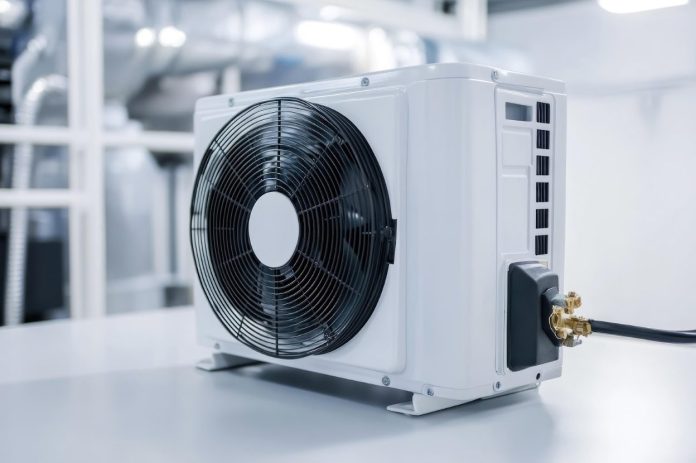Worksport’s Terravis Energy Selected by NREL to Evaluate Frost-Free Heat Pump Technology in Alaska
Worksport (NASDAQ: WKSP) announced Monday that its clean-tech subsidiary, Terravis Energy, has been selected by the U.S. Department of Energy’s National Renewable Energy Laboratory (NREL) under the Technical Assistance Program (NTAP). The award will support evaluation and modeling of the company’s AetherLux Pro heat pump, equipped with its proprietary ZeroFrost technology in Alaska. The study will analyze household energy cost savings, identify deployment challenges, and map out a path to field demonstrations in Fairbanks and Juneau.
Terravis asserts that its ZeroFrost system eliminates the defrost cycles that degrade efficiency in conventional heat pumps, enabling continuous operation even at extreme low temperatures reportedly below –56 °F. If validated, the technology could become a turning point for cold-climate heating solutions, potentially displacing fossil fuel–based heating systems in many homes, a market Terravis estimates may include up to 60% of North American households.
Steven Rossi, CEO of Worksport, explained that “NREL will analyze and critically determine the feasibility of our technology for Alaskan residents,” noting that the development could accelerate adoption of cold-climate heat pumps across North America. Lorenzo Rossi, CEO of Terravis Energy, added, “AetherLux heat pumps powered by ZeroFrost tech are the world’s first heat pumps that do not freeze. With successful validation from DOE’s NREL, we’ll prove it delivers greater efficiency in all environments while driving adoption in some of the harshest climates on earth.” He further indicated that the project may reshape the trajectory of the HVAC industry and unlock global expansion opportunities for Terravis Energy.
AetherLux Pro & ZeroFrost: Innovation for Extreme Conditions
Terravis developed the AetherLux Pro as a next-generation air-source heat pump for cold climates. Built for durability and extreme performance, it integrates the company’s ZeroFrost technology to avoid ice buildup, essentially removing the need for recurring defrost cycles that standard systems must periodically perform. According to Terravis, this enables consistent heating output even when ambient temperatures drop below –56 °F.
In internal lab tests, ZeroFrost operated continuously without defrosting in extreme cold, maintaining heat output and system pressure stability. The unit reportedly achieved a heat output around 85.9 °F (29.9 °C) in harsh conditions and sustained higher average temperatures. The system is also engineered to function up to 131 °F (55 °C), making it viable across diverse climates.
Terravis claims that the Pro variant offers substantial efficiency gains over traditional models, even in subzero conditions and that it outpaces competing systems in its class. The company is actively pushing toward commercialization of Pro units while continuing certification work on standard AetherLux (non-Pro) versions during 2025.
One key competitive edge is eliminating defrost cycles, which typically consume power and interrupt heating performance in conventional heat pumps during freezing conditions. By doing away with that requirement, ZeroFrost aims to maintain continuous operation and better energy efficiency.
Why It Matters in Cold Regions
Though heat pump adoption has surged globally, their performance in extremely cold regions has remained a limiting factor. Many heat pumps struggle in subzero conditions and rely on backup heating systems or frequent defrosting, reducing efficiency gains in northern and mountainous areas. The reliability of heat pumps in these contexts is often questioned, and many homes still depend on natural gas, oil, or electric resistance heating as a fallback.
If Terravis’ claims hold up under real-world conditions, ZeroFrost could open the door for greater penetration of heat pump systems in markets previously considered too challenging, such as Alaska, northern Canada, parts of Scandinavia, and remote cold regions. This represents a significant market opportunity: Terravis estimates that up to 60% of North American homes fall into what it calls the “cold-climate heating market.”
By partnering with a reputable national lab like NREL, Terravis gains independent validation and a clearer path to credibility among utilities, regulators, and homeowners. The study in Alaska may serve as a proof point for scaling deployments in other cold weather zones.
Challenges & Questions Ahead
While the technology is promising, several risks and variables must be evaluated:
- Real-world performance vs. lab results: Field conditions involve wind, humidity, snow accumulation, and operational stressors that can diverge from controlled tests.
- Cost and affordability: Even if the heat pump performs well, installation and upfront costs will matter. Can Terravis make it economically competitive versus conventional heating systems?
- Manufacturing scale and supply chain: Building reliable, high-performance units at scale is not trivial, sourcing components, ensuring durability, and maintaining quality will challenge execution.
- Regulatory & utility acceptance: Gaining inclusion in incentive or rebate programs, meeting certifications, and convincing energy utilities to participate are all essential steps.
- Market adoption behavior: Homeowners often hesitate to adopt new technologies in extreme climates due to perceived risk. Demonstration projects and trust-building will be key.
Market Outlook & Strategic Implications
The global heat pump market is forecast to exceed $135 billion (or more, depending on sources) by 2030, with especially strong growth expected in colder markets if technological hurdles can be overcome. The sub-market for cold climate heat pumps represents a substantial and relatively untapped opportunity.
Should Terravis succeed, it may challenge entrenched HVAC incumbents and carve out a leadership position in extreme-weather heating. Its alignment with clean energy, desire to displace fossil fuel heating, and ambition to expand globally suggest that this project could become a foundational pillar of its future.
As field pilot projects in Alaska are defined, stakeholders will be watching the results closely and whether ZeroFrost can deliver on its promise. If it does, it may mark a turning point not only for Terravis but for how we heat homes in the coldest corners of the world.



 Bitcoin
Bitcoin  Ethereum
Ethereum  Tether
Tether  XRP
XRP  USDC
USDC  TRON
TRON  Lido Staked Ether
Lido Staked Ether  Cardano
Cardano  Avalanche
Avalanche  Toncoin
Toncoin  Solana
Solana